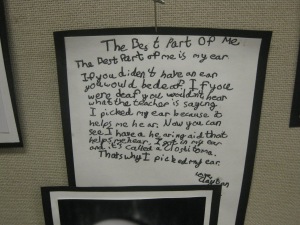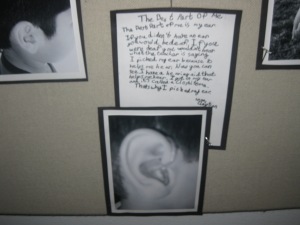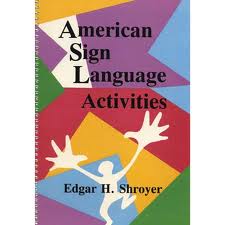 With Thanksgiving right around the corner…that is at the end of this week. You may be looking for fun and creative activities to enjoy with the kids. There are several resources listed below that can turn up the level of excitement for the little ones Thanksgiving. Hope you find the resources helpful and ENJOY!
With Thanksgiving right around the corner…that is at the end of this week. You may be looking for fun and creative activities to enjoy with the kids. There are several resources listed below that can turn up the level of excitement for the little ones Thanksgiving. Hope you find the resources helpful and ENJOY!
These websites have resources for:
ASL Thanksgiving Crafts for Kids
ASL Thanksgiving Song-Barb Wifi
Sign Translation (basic)
For hearing people:Barb states that each sign is signed four times and then at the end a word is sign once. You will see that by the …..between the first four words and the last word.
Thanksgiving(signed 4times)
Plan(signed 4 times)
Cook (signed 4 times)
Smell (signed 4times)…..good (signed once)
Invite (signed 4 times)
Children (signed 4 times)
Adults(signed 4 times)
Hello(signed 4 times)
Welcome(signed 4 times)…come in (signed once)
Share (signed 4 times)
Pie(signed 4 times)
Eat(signed 4 times)…..full (signed once)
Talk(signed 4 times)
Enjoy (signed 4 times)
Happy(signed 4 times)
Clean(signed 4 times)
Rest…(signed once)
Thanksgiving Snipets-Rob Neilson
Great video but no caption for hearing people who have not learned ASL. However, still great to watch! Can also be a great resource for those who have taken sign language to practice receptive skills.
BLOG RSOURCES
Thanksgiving turkey hand print-free handout
Thanksgiving Activities
Related articles
- 15 Thanksgiving Crafts with Turkeys (igamemom.com)
- What’s Cooking on Pinterest This Thanksgiving? [Repost] (tailwindapp.com)
- Cute and Easy Thanksgiving Cupcakes (calyssan.wordpress.com)
- Thanksgiving Turkey Crafts for Kids: Popular Parenting Pinterest Pin Picks (socialnewsdaily.com)
- Commander’s Message For Thanksgiving 2013 (fortaphill.wordpress.com)








You must be logged in to post a comment.